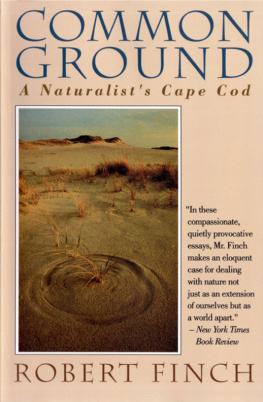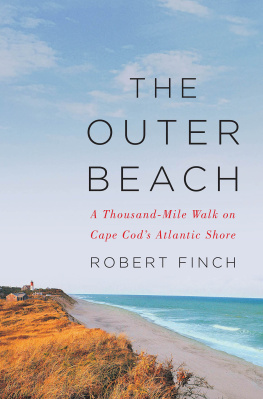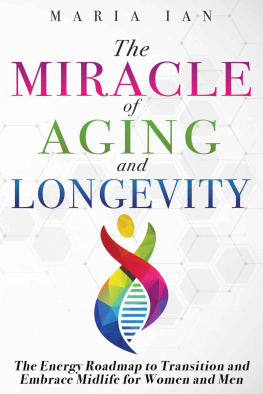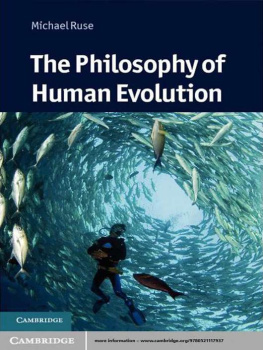Finch - The Biology of Human Longevity: Inflammation, Nutrition, and Aging in the Evolution of Lifespans
Here you can read online Finch - The Biology of Human Longevity: Inflammation, Nutrition, and Aging in the Evolution of Lifespans full text of the book (entire story) in english for free. Download pdf and epub, get meaning, cover and reviews about this ebook. year: 2007, publisher: Elsevier Science, genre: Romance novel. Description of the work, (preface) as well as reviews are available. Best literature library LitArk.com created for fans of good reading and offers a wide selection of genres:
Romance novel
Science fiction
Adventure
Detective
Science
History
Home and family
Prose
Art
Politics
Computer
Non-fiction
Religion
Business
Children
Humor
Choose a favorite category and find really read worthwhile books. Enjoy immersion in the world of imagination, feel the emotions of the characters or learn something new for yourself, make an fascinating discovery.

- Book:The Biology of Human Longevity: Inflammation, Nutrition, and Aging in the Evolution of Lifespans
- Author:
- Publisher:Elsevier Science
- Genre:
- Year:2007
- Rating:3 / 5
- Favourites:Add to favourites
- Your mark:
- 60
- 1
- 2
- 3
- 4
- 5
The Biology of Human Longevity: Inflammation, Nutrition, and Aging in the Evolution of Lifespans: summary, description and annotation
We offer to read an annotation, description, summary or preface (depends on what the author of the book "The Biology of Human Longevity: Inflammation, Nutrition, and Aging in the Evolution of Lifespans" wrote himself). If you haven't found the necessary information about the book — write in the comments, we will try to find it.
The Biology of Human Longevity: Inflammation, Nutrition, and Aging in the Evolution of Lifespans — read online for free the complete book (whole text) full work
Below is the text of the book, divided by pages. System saving the place of the last page read, allows you to conveniently read the book "The Biology of Human Longevity: Inflammation, Nutrition, and Aging in the Evolution of Lifespans" online for free, without having to search again every time where you left off. Put a bookmark, and you can go to the page where you finished reading at any time.
Font size:
Interval:
Bookmark:
- Tables in Chapter 1
- Tables in Chapter 2
- Tables in Chapter 3
- Tables in Chapter 4
- Tables in Chapter 5
- Tables in Chapter 6
- Figures in Chapter 1
- Figures in Chapter 2
- Figures in Chapter 3
- Figures in Chapter 4
- Figures in Chapter 5
- Figures in Chapter 6
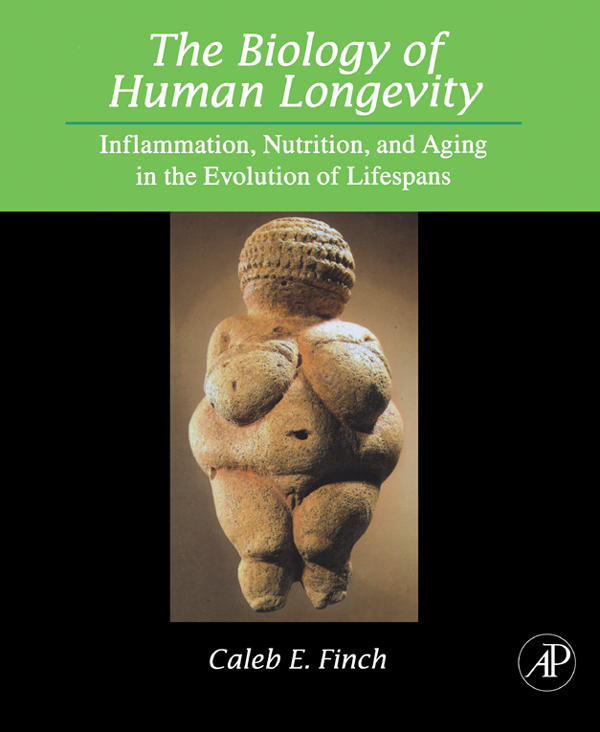
Caleb E. Finch
Davis School of Gerontology and USC College University of Southern California
Academic Press
Aging is a great scientific mystery. For 4 decades, I have been fascinated by the possibility of a general theory addressing genomic mechanisms in the continuum of development and aging in health and disease. While a Yale undergraduate in Biophysics, I was fortunate to be mentored by Carl Woese, who suggested that if I wanted to tackle a really new problem in little-trodden scientific territory, I should think about aging: It is even more mysterious than development. About 5 years later as a graduate student at the Rockefeller, I began work on neuroendocrine aspects of aging guided by Alfred Mirsky (McEwen, 1992). Mirsky was a major conceptualizer of differential gene expression in cell differentiation and development, including postnatal growth and maturation. Eric Davidson and Bruce McEwen, prior Mirsky students, were also key debaters in developing my thoughts on aging.
). Some readers of my thesis thought my attentions had strayed from my experiments by the emphasis I gave them:
.)
). Peyton Rous made a chilling comment after my thesis lecture (to the effect of): Finch, I dont see why you are wasting your time on a subject like agingeveryone knows aging is only about vascular disease and cancer. Rous may yet be proved right, but to no chagrin in view of the thriving subject that has emerged and that may give a broad understanding of shared processes in many aspects of aging.
During the past 35 years, my research has remained focused on brain mechanisms in aging. The turn toward inflammation began with molecular studies of Alzheimer disease about 15 years ago. My lab and others discovered that inflammatory mechanisms were activated in Alzheimer disease (AD). Moreover, we showed that some glial inflammatory changes in AD also occur to lesser degrees during normal aging and can be detected before midlife. Furthermore, caloric restriction, which increases rodent life span, also retarded brain inflammatory changes. During this same decade, it became clear that vascular disease also involves slow inflammatory processes and that anti-inflammatory drugs reduce the risk of heart disease and possibly of Alzheimer disease as well. In the last 5 years, I have developed a major collaboration with Eileen Crimmins, a USC demographer whose work also showed the importance of inflammation in human health. Our papers address the questions of 4 decades back and have given the rationale for a new set of animal models being developed in collaboration with my close colleagues Todd Morgan and Valter Longo. Inflammationdiet interactions could explain the recent evolution of human longevity with caveats of its future potential.
My inquiry necessarily leads to a broad range of evidence usually not considered on the same page by highly focused researchers of specific diseases. The examples illustrate key points and cannot be comprehensive. I will try to indicate the level of certainty in evidence being considered and not try to explain too much.
I am grateful for the detailed comments and information given by Dawn Alley (NIA), Steve Austad (U Texas, San Antonio), David Barker (Oregon State U, MRC Southampton), Andrej Bartke (Southern Illinois U), Barry Bogin (U Michigan, Dearborn), Eileen Crimmins (USC), Greg Drevenstedt (USC), Rita Effros (UCLA), Doris Finch (Altadena, CA), Luigi Fontana (Washington U), Roger Gosden (Weill-Cornell Medical College), Michael Gurven (UC Santa Barbara), Shiro Horiuchi (Rockefeller U), Tom Johnson (U Colorado, Boulder), Marja Jylh (U Tampere), Hillard Kaplan (U New Mexico), Edward Lakatta (NIA), Gary Landis (USC), Valter Longo (USC), George Martin (U Washington), Christopher Martyn (Winchester, UK), Edward Masoro (U Texas San Antonio), Roger McCarter (Penn State), Richard Miller (U Michigan, Ann Arbor), Charles Mobbs (Mount Sinai, NYC), Vincent Monnier (Case Western Reserve), Todd Morgan (USC), Wulf Palinski (U California, La Jolla), Kari Pitknen (U Helsinki), Scott Pletcher (Baylor), Leena Rsnen (U Helsinki), Karri Silventoinin (U Helsinki), Craig Stanford (USC), Aryeh Stein (Emory U), John Tower (USC), and Paulus van Noord (Utrecht). And I am especially grateful to Eileen Crimmins and Valter Longo, who read all the chapters. Expert editorial assistance was provided by Jacqueline Lentz (USC), Bernard Steinman (USC), and Swamini Wakkar (USC); Bernard also masterfully developed the figures. The research from my lab was supported by the National Institute on Aging, the Alzheimers Association, the John Douglas French Foundation for Alzheimer disease, the ARCO/William F. Kieschnick Chair in Neurobiology of Aging, the Ellison Foundation for Medical Research, and the Ruth Ziegler Fund. Lastly and firstly, I could not have completed this project without the unvarying support of Doris Finch, who was always ready to relight the scholars lamp at flagging moments.
This chapter provides an overview of experimental models for human aging and age-related diseases. In most chronic diseases of aging, oxidative stress and inflammation are prominent. Moreover, many tissues without specific pathology that show modest inflammatory changes during aging share major subsets of those in chronic diseases of aging. An overview of inflammation and oxidant stress in host defense suggests a classification of bystander damage. Mechanisms of inflammation are outlined, including the energy costs. This chapter also reviews in more detail inflammation in arterial and Alzheimer disease. These details are critical to understanding human aging and the role of insulin-like metabolic pathways. Many inflammatory processes emerge during normal or usual aging, but in the absence of specific diseases. The slow creep of inflammation from early years may drive the accelerating incidence of chronic diseases.
PART I
PART II
). During these huge demographic shifts, human ancestors made two other major transitions. The diet changed from the plant-based diets of great apes to the high-level meat-eating and omnivory that characterizes humans. Moreover, exposure to infections increased. The great apes abandon their night nests each day and rarely congregate closely for very long in large groups. As group density and sedentism increased in our ancestors, so would their burden of infections and inflammation have increased from exposure to pathogens in raw animal tissues and from human excreta.
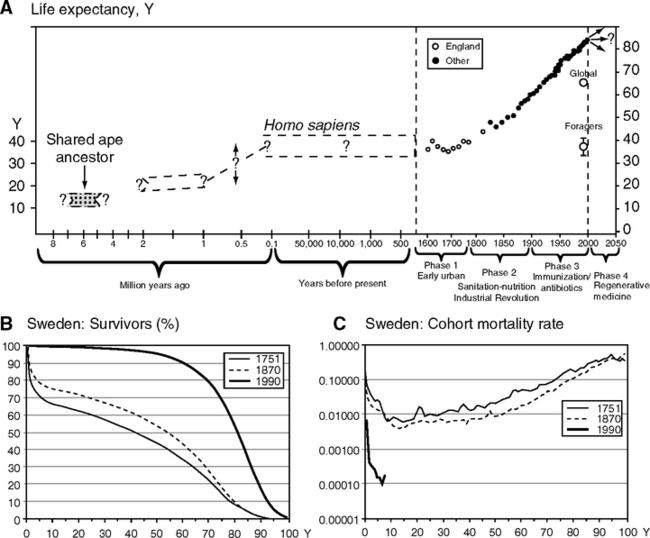
,
I propose that the growth of meat-eating and sedentism selected for gene variants adaptive in host defense and adaptive for high fat intake. Some of these genes may have favored the increased survival to later ages that enables the uniquely human multi-generational caregiving and mentoring. Many such genetic changes had probably evolved by the time of the Venus of Willendorf (cover photograph), 21,000 years ago in the Upper Paleolithic. Her manifest obesity may be viewed as adaptive in times of fluctuating food, with few ill consequences during the short lifespans of the pre-modern era, at the least, fewer than in the modern era of rampant chronic obesity. However, the most recent and rapid increases in life span cannot be due to the natural selection of genes for greater longevity.
Font size:
Interval:
Bookmark:
Similar books «The Biology of Human Longevity: Inflammation, Nutrition, and Aging in the Evolution of Lifespans»
Look at similar books to The Biology of Human Longevity: Inflammation, Nutrition, and Aging in the Evolution of Lifespans. We have selected literature similar in name and meaning in the hope of providing readers with more options to find new, interesting, not yet read works.
Discussion, reviews of the book The Biology of Human Longevity: Inflammation, Nutrition, and Aging in the Evolution of Lifespans and just readers' own opinions. Leave your comments, write what you think about the work, its meaning or the main characters. Specify what exactly you liked and what you didn't like, and why you think so.

